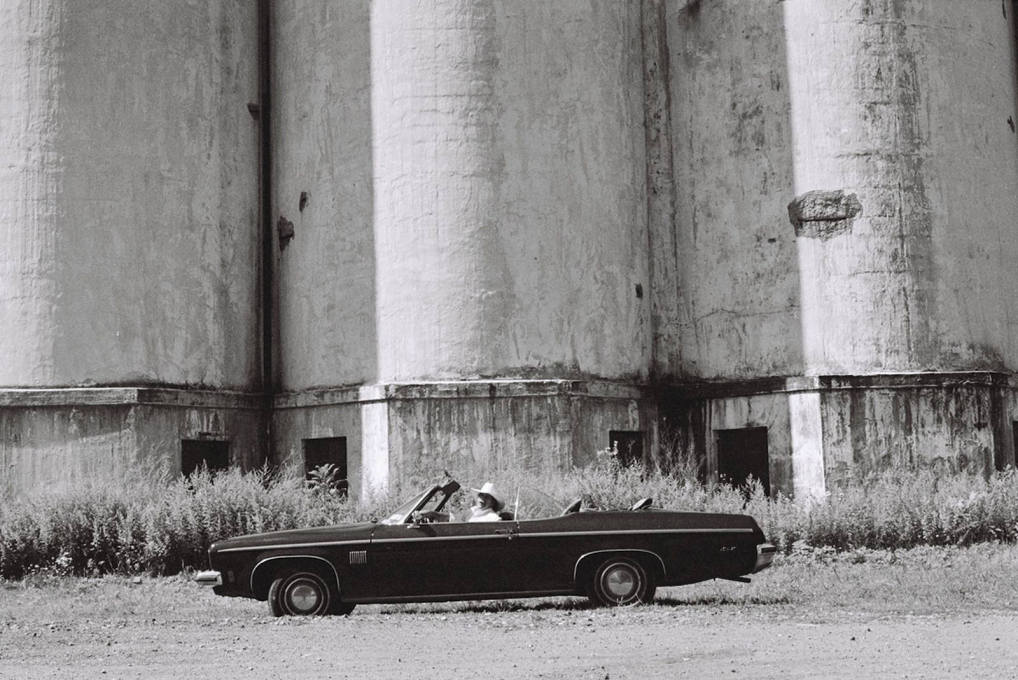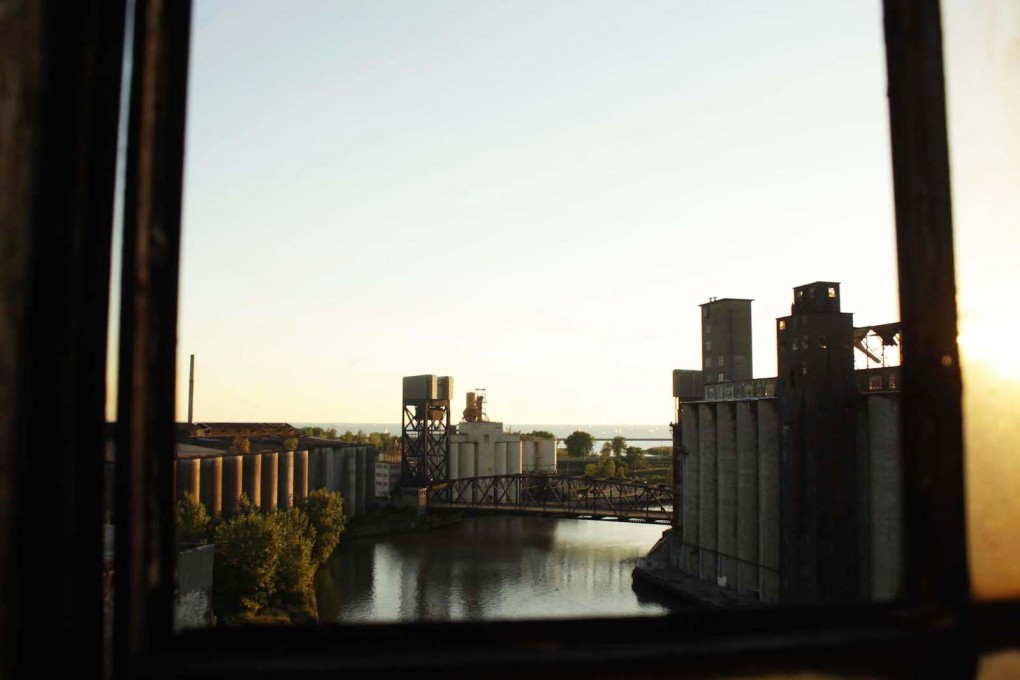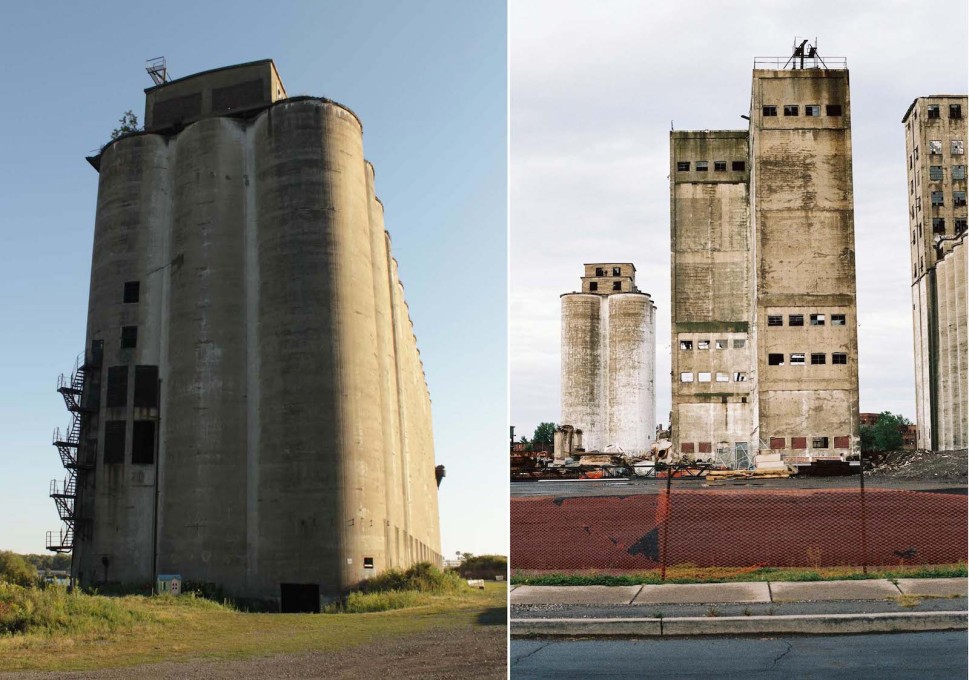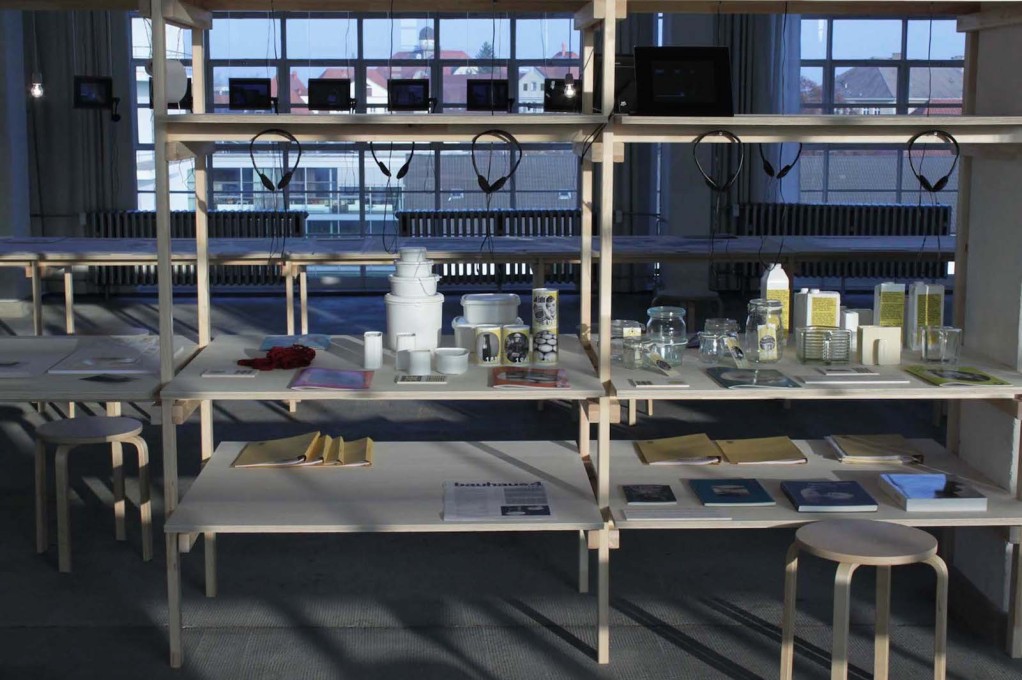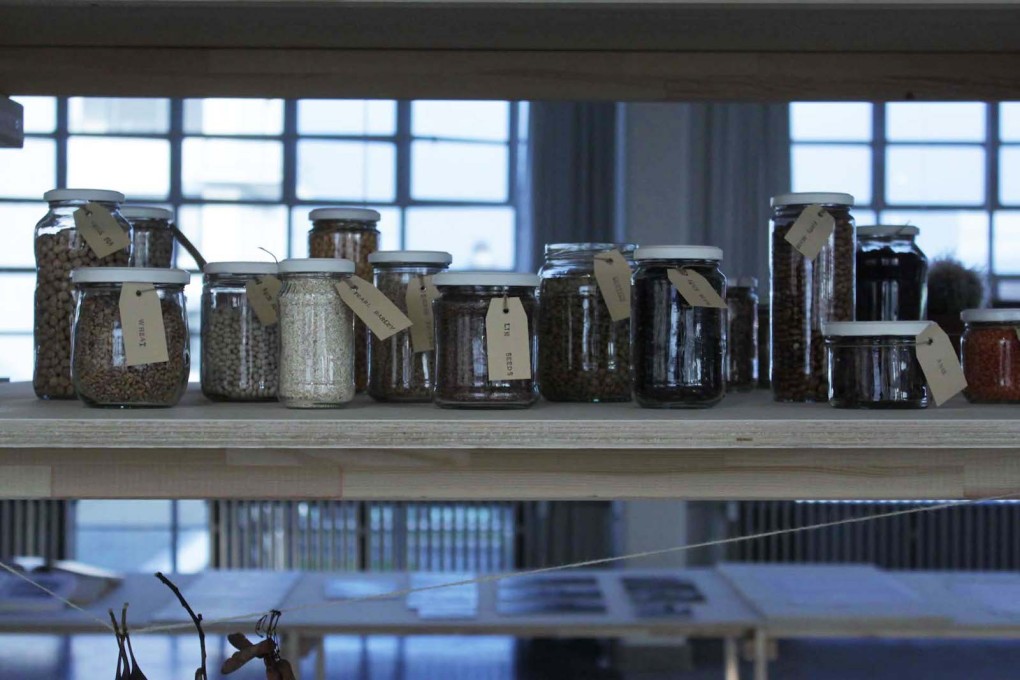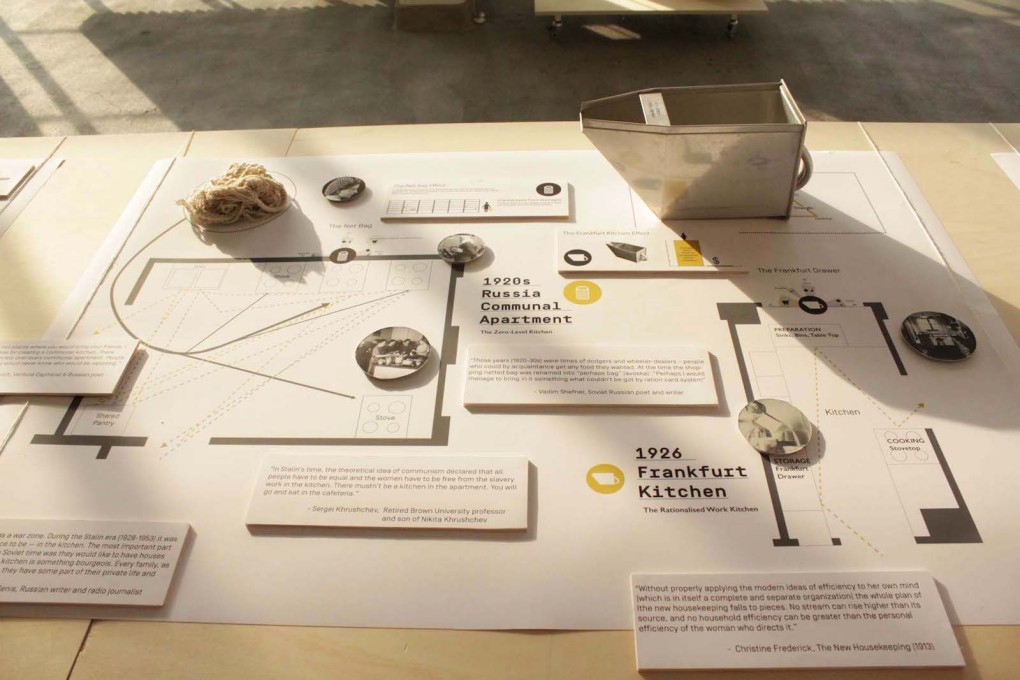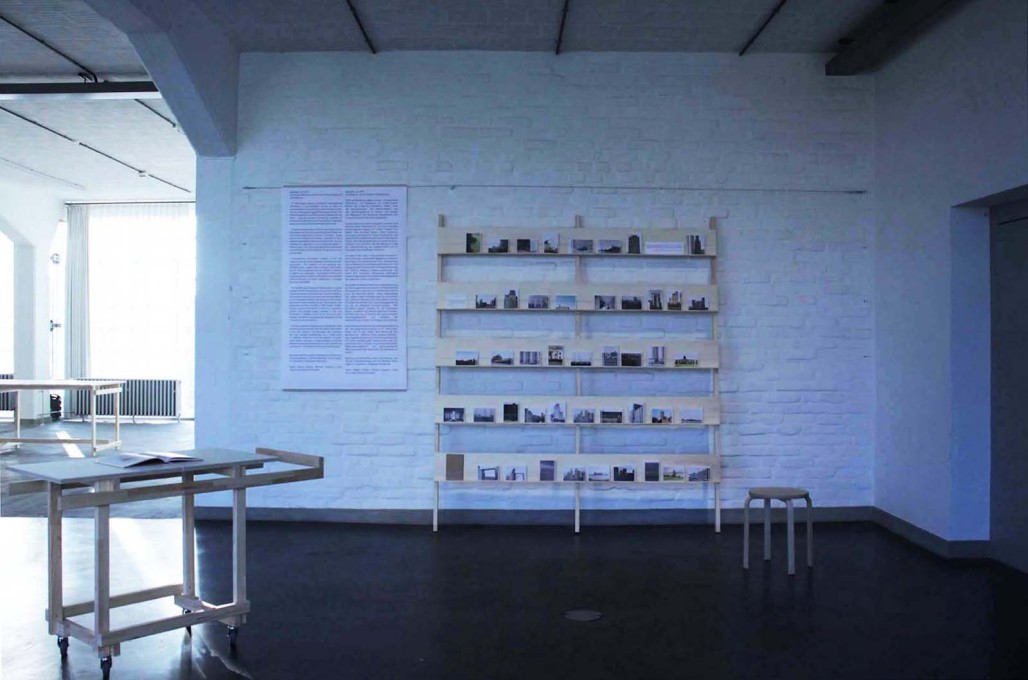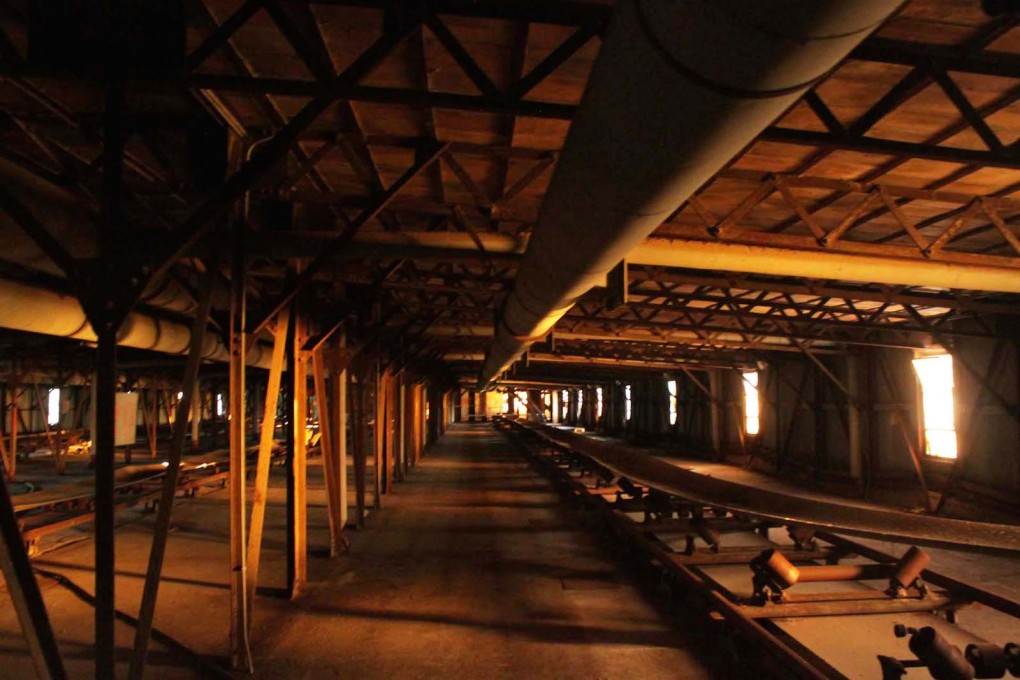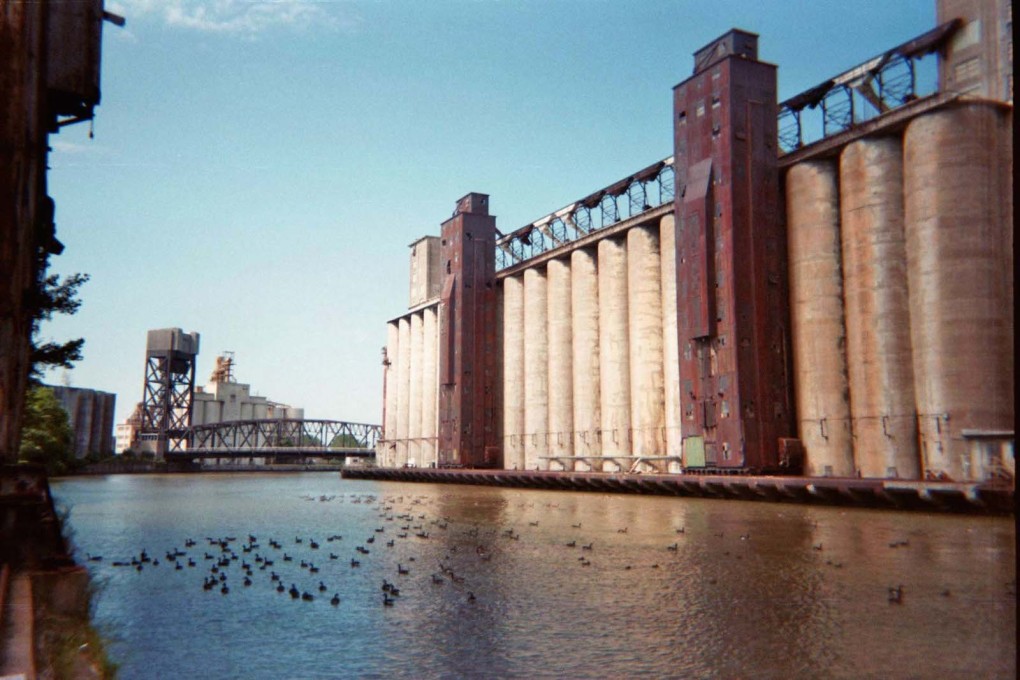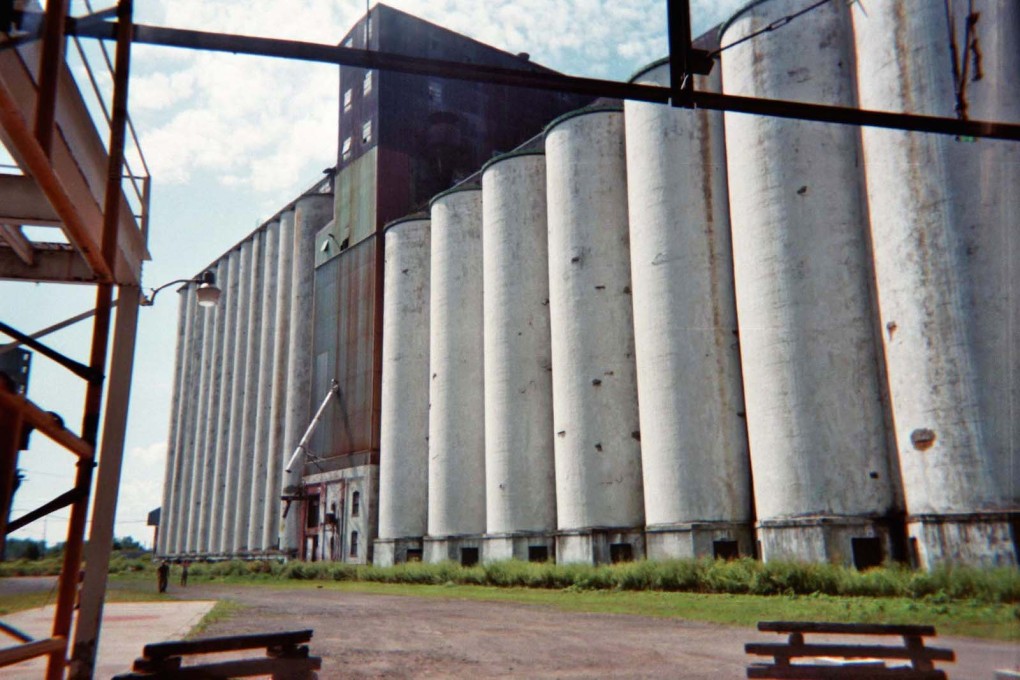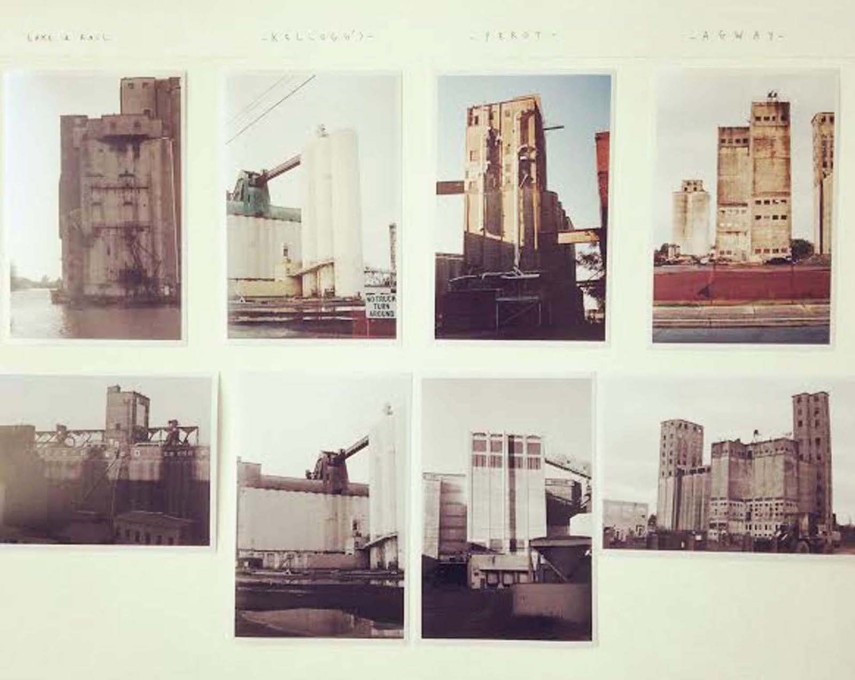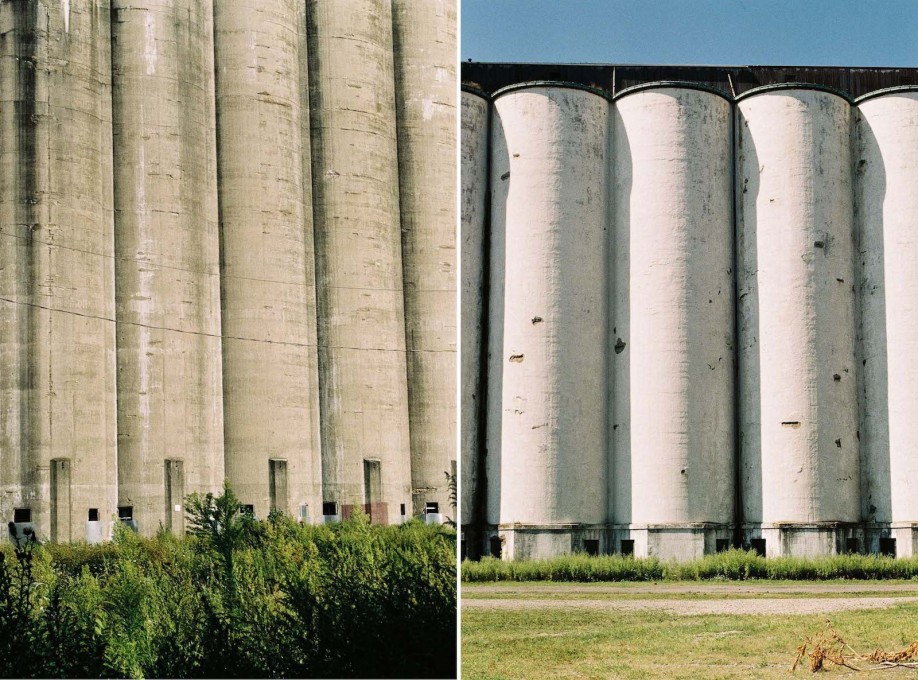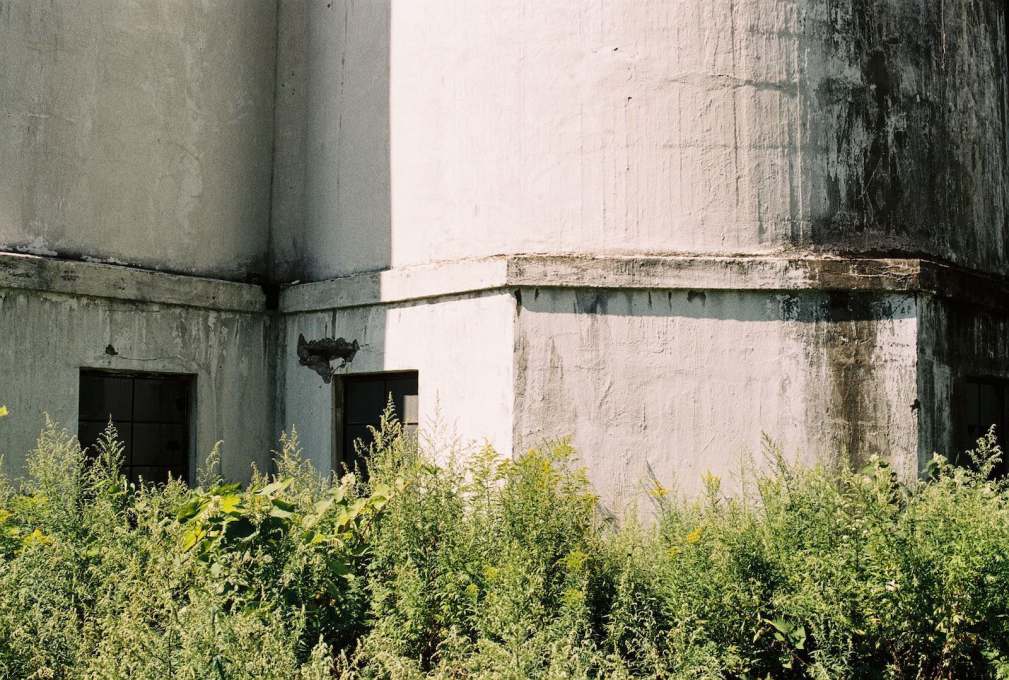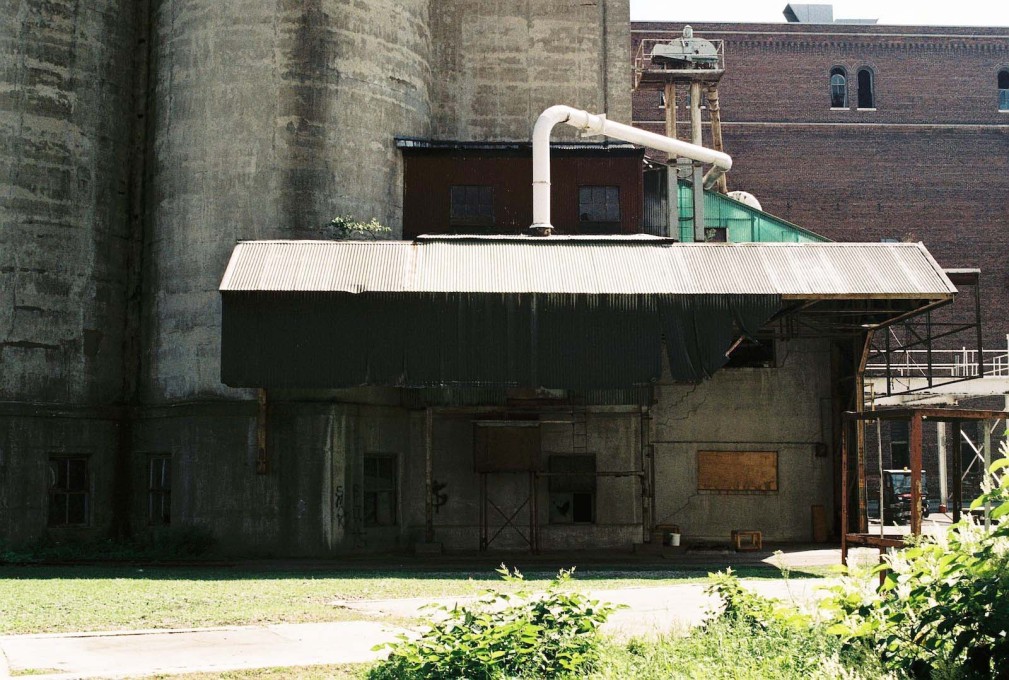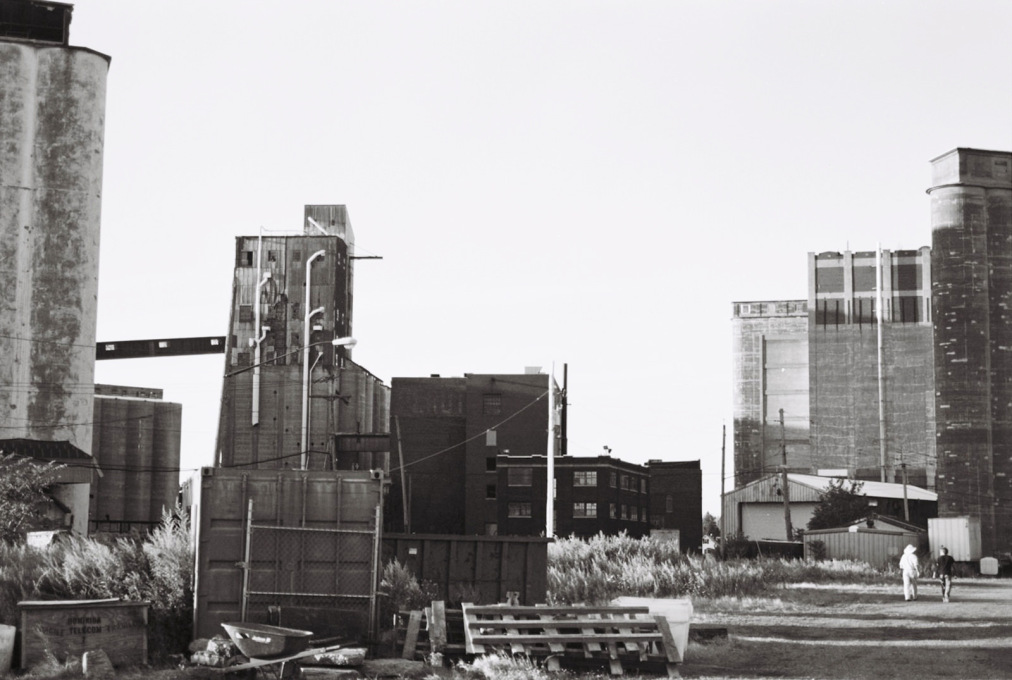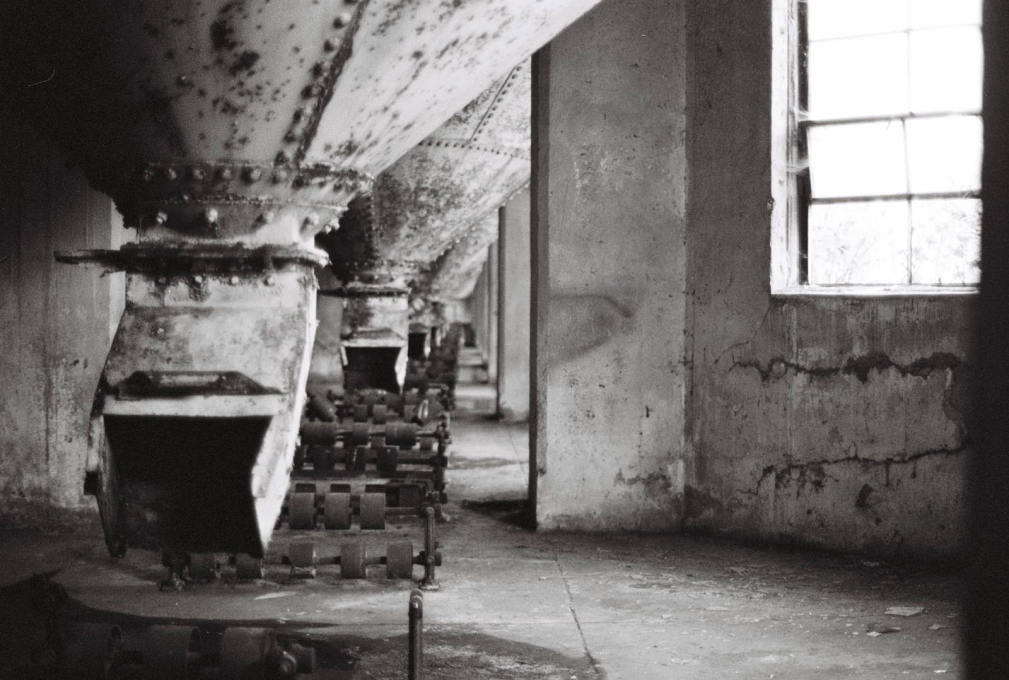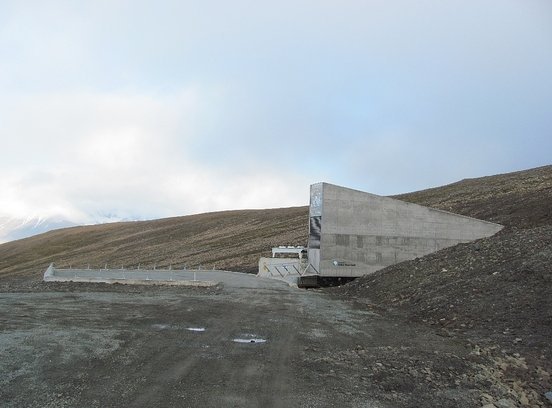The Bauhaus Lab is a post-graduate programme allowing young architects, designers, and theorists to spend a period of months at the Bauhaus Dessau, Germany, researching collaboratively and developing an exhibition on their topic. The second iteration of the programme, whose exhibition has just launched, focused on the “architecture of the reservoir”, and traced the relationship between functional architecture such as grain silos on the aesthetics of modernism. Alison Hugill, the curator-theorist on the seven-person team, describes the immersive research process and how all that researched was funnelled into the reservoir of the current exhibition.
We’re all familiar with the concept of “ruin porn”: blogs and tours abound highlighting the decline of the built environment, detritus of an earlier industrial age. Detroit is the epicentre of this phenomenon, but there’s a long list of American B-cities that would do just as well – cities that were once at the top of their game, and are now crumbling monuments to another, more economically prosperous time. But much less discussed is the effect these cities had, in their heydays, on European architects striving to build new architectural movements.
At the height of their industrial relevance, the concrete grain silos of North America were captivating structures for the European modernists. In 1925, Walter Gropius published Internationale Architektur, a photographic survey of what he considered the iconic feats of modern architecture at the time. Alongside images of Bauhaus buildings and well-known buildings by members of the Deutsche Werkbund, he mysteriously integrated several pictures of North American grain silos. Modernism’s expressed appeal of the silos was the “naiveté” of their designs – they represented “architecture without architects”. At a time of political turmoil in Europe, their unpretentious design was a welcome inspiration to a culture suffocating under the weight of tradition.
Gropius had not yet been to America at that time. His fascination with the concrete industrial architecture of the silos began with a trans-Atlantic transfer of images, through postcards, World Expositions and a proliferation of architectural Bilderbücher. These structures indicated for him a “neuer Formwillen” – a new attention to form – that would define the coming architectural age. Yet he was not interested in their functions, nor the role they played in the rapidly industrialising economy of the time.

The first grain elevator was invented by Joseph Dart in Buffalo, New York in 1842-43. Dart was a merchant who worked with engineers to create the design. He was not an architect, and his design was concerned entirely with the building’s function rather than the aesthetic of its form. As Buffalo-based architectural historian and architect Kerry Traynor put it when interviewed in Buffalo’s historic “Silo City”: “Concrete made sense because of the way it was formed and because of the way grain acts… had the requirements for these buildings been better served by another form, [the grain silos] probably would have been in that other form and with that material.”
The Bauhaus Lab is a three-month postgraduate research programme focused around a pre-determined theme. The outcome is an exhibition, conceived and curated collaboratively by all participants. This year’s research team was made up of seven international participants: five architects, a graphic designer, and a curator-theorist (me). Our workspace in the Bauhaus main building was also the site of our final exhibition, making the residency in Dessau a fully immersive process. Together with our advisors – Regina Bittner, Michael Zinganel, and Katja Szymczak – we travelled to Buffalo in September on a research trip to “go beyond” the fascination documented by Gropius, Le Corbusier, Mendelsohn, and others. We wanted to learn about the function of the silos, their technology, and the economy, geography, and social history in which they were embedded. Our aim was to explore the relationship between architecture and agriculture, with a particular focus on storage.
After the trip, we divided our research into three core concerns: Systems of Storage, Objects of Storage, and Politics of Storage. The first thematic section was set in Buffalo, New York, where participants detailed, through maps and diagrams, the mechanism of the silo as well as the international trade and economic speculation on grain, demonstrating the importance of Buffalo as a hub for transportation and infrastructure.
The Objects section took the issue of storage to a different scale, looking at food production and consumption in the domestic sphere by tracing the social history of six storage objects. From the iconic Frankfurt Kitchen drawers of the twenties to the shiny, plastic Tupperware of the fifties, the participants explored the influence of industrialisation and standardisation on the home, specifically in their relationship to spatial and temporal changes in kitchen models (made to strictly follow Taylorist principles), and their effects on the roles of women. We found that many parallels persist between these new scientific models for housework and the critical concerns of recent feminist discourse regarding the valuation and compensation of domestic labour.
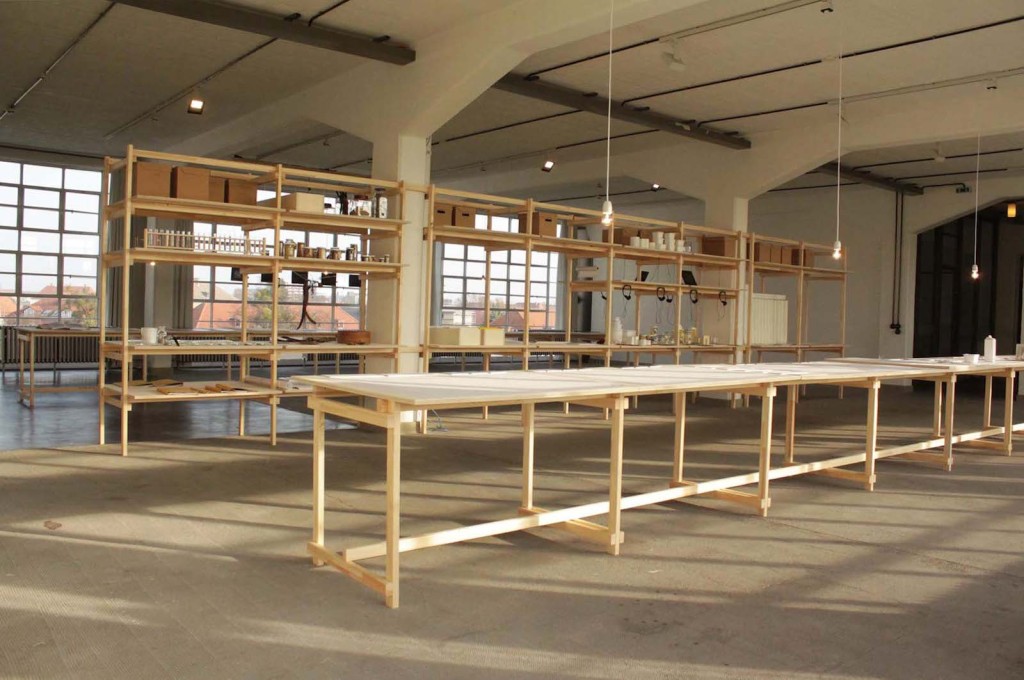
The Politics section dealt with the present state of agricultural storage architecture, in particular the Svalbard Global Seed Vault (inaugurated in 2008) in Northern Norway and the complex interweaving and opposition of corporate monoculture, and community initiatives for seed freedom that would see more diverse farming methods prevail. The storage of the world’s seeds in an almost apocalyptic facility built into a permafrost mountain in Norway presents a point of departure for understanding the effects of industrialised agriculture from the inception of the grain elevator until today.
The curatorial concept for the resulting exhibition, presented on the top floor of the Bauhaus Dessau main building, mimics a kind of lab or archive, with a central interactive storage unit holding the bulk of our research materials: seeds in vials and test tubes, a silo model, visual displays of the mass-produced storage objects, and audio clips giving voice to these six chosen objects and their contextualised histories. A timeline of the historical research is stored in a cataloguing box, to be perused by visitors. Two long tables on either side display the “conclusions” of our research, while on-site interviews with many of our contacts in Buffalo are displayed along the quintessential Bauhaus windows. The exhibition opens with a display of postcards – photographs of the silos, taken during our trip – that bring full circle the image transfer that piqued Gropius’ curiosity in the first place.
- Alison Hugill has a Masters in Art Theory from Goldsmiths College, University of London (2011). Her research focuses on marxist-feminist politics and aesthetic theories of community, communication and communism. Alison is an editor, writer and curator based in Berlin. alisonhugill.com
Running on Reserve: Architectures of the Reservoir
14 November 2014 – 5 January 2015
Stiftung Bauhaus Dessau
Gropiusallee 38
06846 Dessau-Roßlau
The exhibition is also a gesture towards the international Household Trade Fair taking place in the Masters’ Houses next year, where stockpiling and storage will be one of the thematic focal points of the Bauhaus Dessau Foundation’s interdisciplinary art and research project “Householding”. Part of the Bauhaus Lab exhibition will be included in the project, which opens in June 2015.




